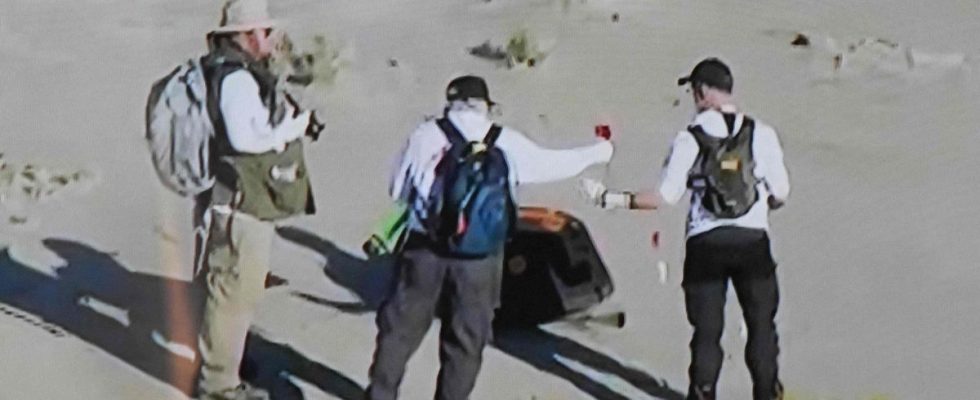Successful landing. The largest asteroid sample ever collected, and the first for NASA, landed on Sunday in the Utah desert in the United States, at the end of a dizzying final descent through the Earth’s atmosphere, seven years later takeoff of the probe Osiris-Rex. The fall, observed by army sensors, had to be slowed by two successive parachutes. The main parachute, however, deployed higher than expected, and the capsule landed slightly earlier than expected, a NASA commentator announced on his live video.
The sample, taken in 2020 from the asteroid Bennu, must contain around 250 grams of material, according to the American space agency’s estimate, much more than the two previous asteroid samples reported by Japanese missions. It should “help us better understand the types of asteroids that could threaten the Earth”, and shed light on “the very beginning of the history of our solar system”, underlined the boss of the space agency, Bill Nelson.
Osiris-Rex leaves for another asteroid
“The return of this sample is truly historic,” Amy Simon, NASA scientist, told AFP before the landing. This is the “largest sample we have brought back from lunar rocks” from the Apollo program, concluded in 1972. The area targeted on the ground was 58 km long by 14 km wide, on a military zone usually used for test missiles.
About four hours before the scheduled landing time, the probe Osiris-Rex released the capsule containing the sample, more than 100,000 km from Earth (about 1/3 of the Earth-Moon distance). During the last 13 minutes, this capsule crossed the atmosphere: it entered at more than 44,000 km/h, with a temperature rising to 2,700°C. For its part, the probe set off to visit another asteroid.
Once the capsule was on the ground, a team equipped with gloves and masks had to ensure its condition, before placing it in a net, then lifted by a helicopter and taken to a temporary “clean room”. The capsule must be exposed to the sand of the American desert for as short a time as possible, in order to avoid any contamination of the sample which could distort subsequent analyses. On Monday, it will be flown to the Johnson Space Center in Houston, Texas. This is where the box will be opened, in another airtight room. The process will take days. NASA is planning a press conference on October 11 to reveal initial results.

